monish
AH elite
Nilgai, Blue Bull, from India
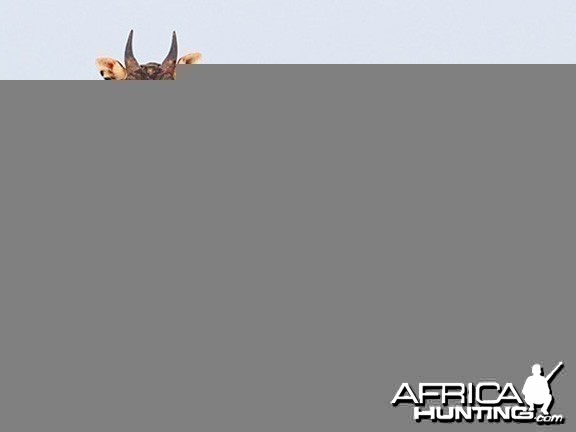
Nilgai also known as Blue Bull
The Nilgai (Boselaphus tragocamelus), sometimes called Nilgau or Blue Bull, is an antelope, and is one of the most commonly seen wild animals of central and northern India and eastern Pakistan; it is also present in parts of southern Nepal. The mature males appear ox-like and are also known as Blue Bull.
Locally it is called 'Roz' and the Hindi word Neelgai (Nilgai) refers to the bluish color of the adult male, and therefore Blue Bull is another name for the animal. Neelgai probably evolved in open, dry Indian forests during the Tertiary geological period. Nilgai are classified as bovids (family Bovidae), and with their close relative, the Four-horned Antelope Tetracerus quadricornis, are the only living representatives of the tribe Boselaphini.
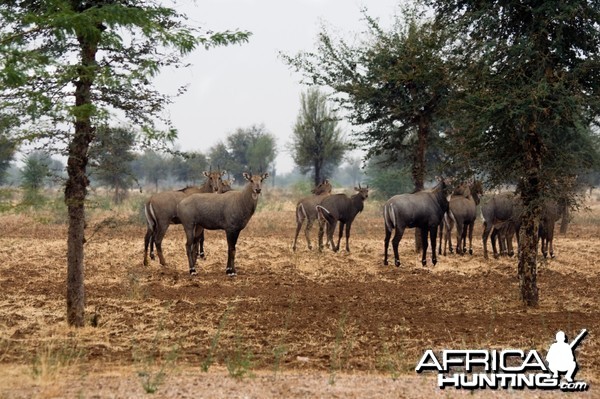
Nilgai antelopes under the rain in desert; Keoladeo National Park, Bharatpur, India
Neelgai are the largest of the Asiatic antelopes. They have a life expectancy of 20 -30 years, most of which they prefer to spend in open jungles and scrubby grasslands. Adult bulls weigh about 220 kg, while the cows weigh about 180 kg and calves about 7 kg at birth. The blue-gray adult bulls have black legs, and some may be brown-tinged, particularly younger bulls. Cows and calves are fawn or pale brown. All have similar dark and white markings on their ears and legs. Only the males have horns, which are black-colored, short (about 18 cm), sharp, and bi curved. The hair of adults is thin in density, wiry, and somewhat oily. Their skin is thick, particularly on the chest and neck of the bulls, where it forms a dermal shield. The eyesight and hearing of neelgai are quite good but their sense of smell less acute. They have good speed and endurance.
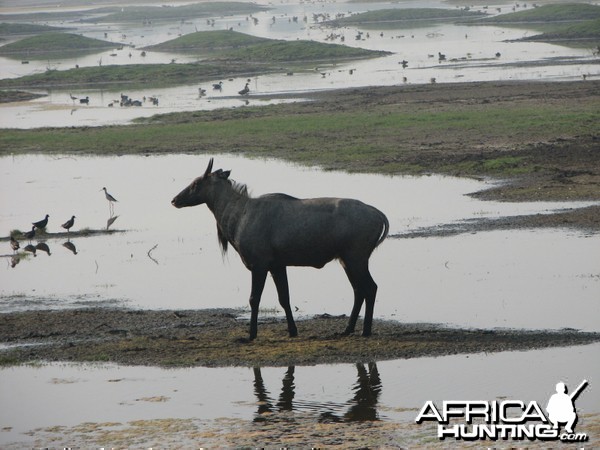
Male Nilgai antelope; Keoladeo National Park, Bharatpur, India
Neelgai make several low-volume vocalizations, including a short, guttural "bwooah" when alerted. Calves may bawl and may make a grunting sound while nursing. In India, Nilgai occur from the foothills of the Himalayas southward to Mysore. They live on a variety of land types from hillsides to level ground with scattered grass steppes, trees, and cultivated areas, but not in thick forests. Their habitats are characterized by paths, water holes, defecation sites, and resting cover. Neelgai were common in India during the 1880s and were hunted for sport by the British. Besides man, the tiger is their main predator. In the 1980s neelgai had drastically declined because of shooting and loss of habitat.
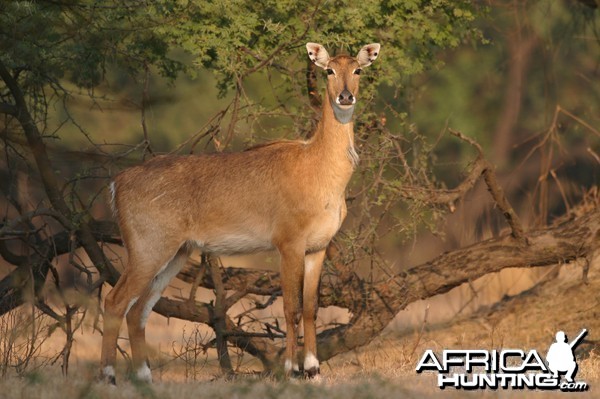
Female Nilgai; Keoladeo Ghana National Park, Bharatpur, India
Neelgai segregate into male and female groups except during the breeding season. Bulls do not maintain a fixed territory but defend a space around themselves. Fighting occurs between dominant bulls, and serious injury or death sometimes results. Neelgai make dung piles by defecating repeatedly on the same sites. The social and territorial significance of this habit is not known. Some breeding takes place year-round. At that time breeding groups of one dominant bull and one to several cows are found. The peak calving period is September through November. Female neelgai breed at age two to three years, whereas males may not breed until their fourth year. The gestation period is approximately 245 days. Twinning is common, and triplets occur occasionally.
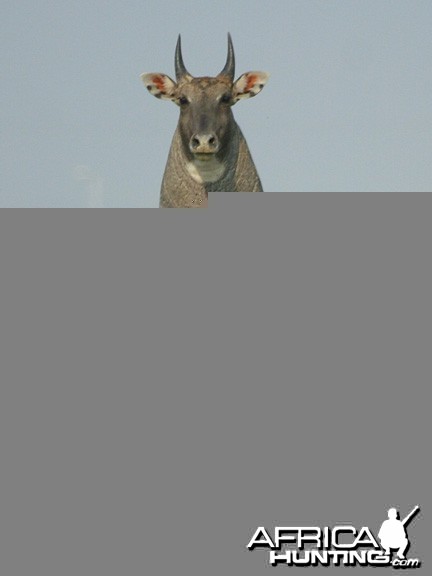
Nilgai also known as Blue Bull
Neelgai eat mainly woody plants supplemented by agricultural crops. They upgrade their diet nutritionally by eating forbs, browse, and plant parts (flowers, seeds, fruit, leaves, stem tips). In the absence of preferred food they readily alter their diet. In India they share certain diseases with livestock and wildlife. Perhaps the most universal of these are foot-and-mouth disease and malignant catarrhal fever. The hunting ban on neelgai in India and hence their recent increase in numbers is causing a major concern for the farmers. The reason for their growing numbers is that many Hindus consider it to be a sacred animal. Allowing controlled hunting in some seasons may be the best.
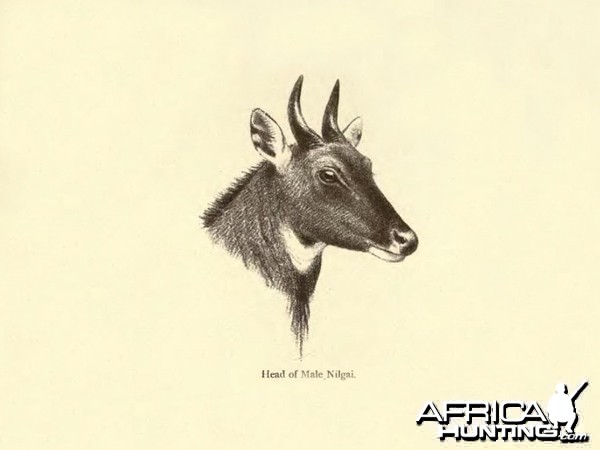
Head of male Nilgai
Monish
Nilgai also known as Blue Bull
The Nilgai (Boselaphus tragocamelus), sometimes called Nilgau or Blue Bull, is an antelope, and is one of the most commonly seen wild animals of central and northern India and eastern Pakistan; it is also present in parts of southern Nepal. The mature males appear ox-like and are also known as Blue Bull.
Locally it is called 'Roz' and the Hindi word Neelgai (Nilgai) refers to the bluish color of the adult male, and therefore Blue Bull is another name for the animal. Neelgai probably evolved in open, dry Indian forests during the Tertiary geological period. Nilgai are classified as bovids (family Bovidae), and with their close relative, the Four-horned Antelope Tetracerus quadricornis, are the only living representatives of the tribe Boselaphini.
Nilgai antelopes under the rain in desert; Keoladeo National Park, Bharatpur, India
Neelgai are the largest of the Asiatic antelopes. They have a life expectancy of 20 -30 years, most of which they prefer to spend in open jungles and scrubby grasslands. Adult bulls weigh about 220 kg, while the cows weigh about 180 kg and calves about 7 kg at birth. The blue-gray adult bulls have black legs, and some may be brown-tinged, particularly younger bulls. Cows and calves are fawn or pale brown. All have similar dark and white markings on their ears and legs. Only the males have horns, which are black-colored, short (about 18 cm), sharp, and bi curved. The hair of adults is thin in density, wiry, and somewhat oily. Their skin is thick, particularly on the chest and neck of the bulls, where it forms a dermal shield. The eyesight and hearing of neelgai are quite good but their sense of smell less acute. They have good speed and endurance.
Male Nilgai antelope; Keoladeo National Park, Bharatpur, India
Neelgai make several low-volume vocalizations, including a short, guttural "bwooah" when alerted. Calves may bawl and may make a grunting sound while nursing. In India, Nilgai occur from the foothills of the Himalayas southward to Mysore. They live on a variety of land types from hillsides to level ground with scattered grass steppes, trees, and cultivated areas, but not in thick forests. Their habitats are characterized by paths, water holes, defecation sites, and resting cover. Neelgai were common in India during the 1880s and were hunted for sport by the British. Besides man, the tiger is their main predator. In the 1980s neelgai had drastically declined because of shooting and loss of habitat.
Female Nilgai; Keoladeo Ghana National Park, Bharatpur, India
Neelgai segregate into male and female groups except during the breeding season. Bulls do not maintain a fixed territory but defend a space around themselves. Fighting occurs between dominant bulls, and serious injury or death sometimes results. Neelgai make dung piles by defecating repeatedly on the same sites. The social and territorial significance of this habit is not known. Some breeding takes place year-round. At that time breeding groups of one dominant bull and one to several cows are found. The peak calving period is September through November. Female neelgai breed at age two to three years, whereas males may not breed until their fourth year. The gestation period is approximately 245 days. Twinning is common, and triplets occur occasionally.
Nilgai also known as Blue Bull
Neelgai eat mainly woody plants supplemented by agricultural crops. They upgrade their diet nutritionally by eating forbs, browse, and plant parts (flowers, seeds, fruit, leaves, stem tips). In the absence of preferred food they readily alter their diet. In India they share certain diseases with livestock and wildlife. Perhaps the most universal of these are foot-and-mouth disease and malignant catarrhal fever. The hunting ban on neelgai in India and hence their recent increase in numbers is causing a major concern for the farmers. The reason for their growing numbers is that many Hindus consider it to be a sacred animal. Allowing controlled hunting in some seasons may be the best.
Head of male Nilgai
Monish
Last edited by a moderator:

